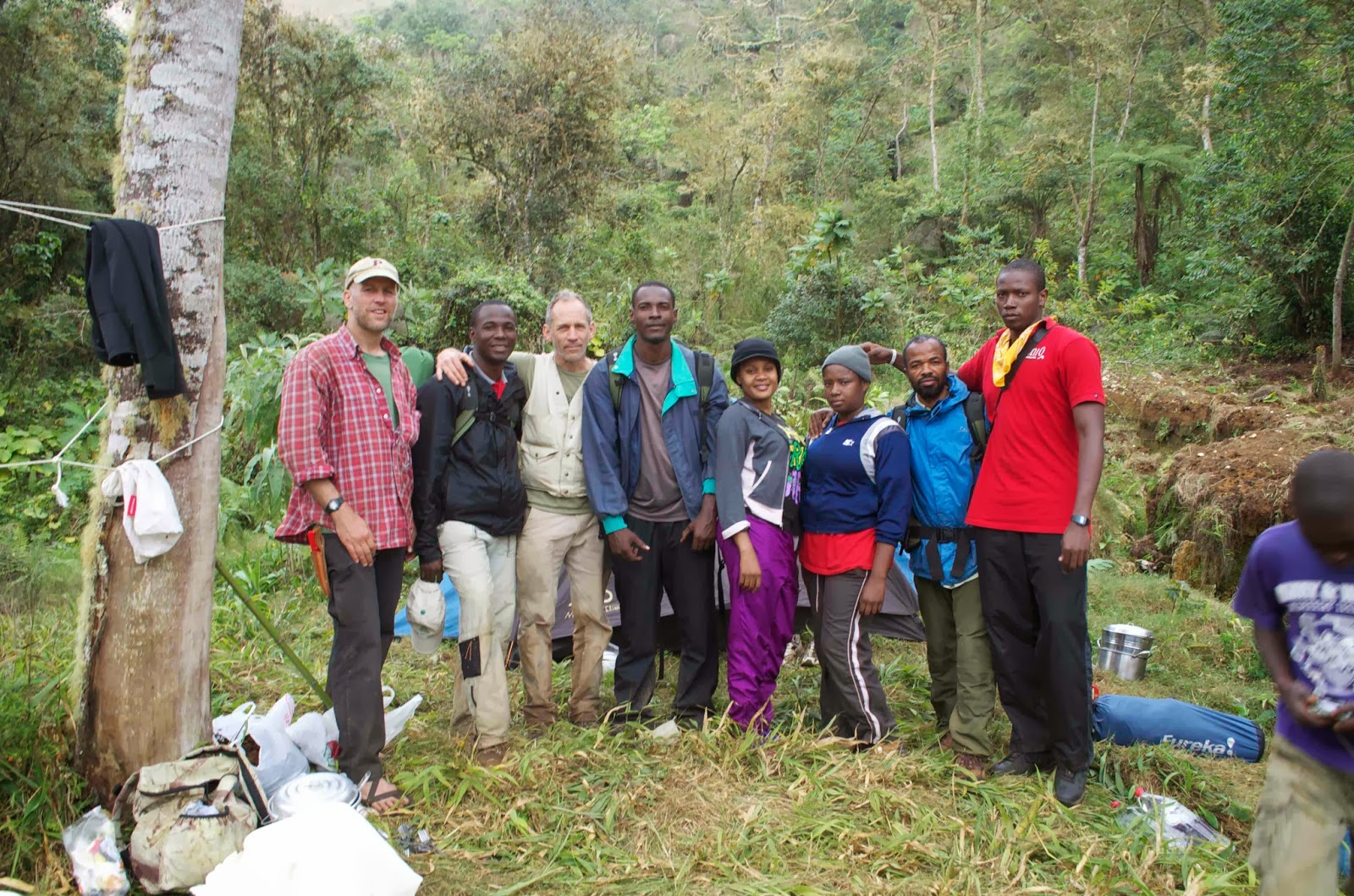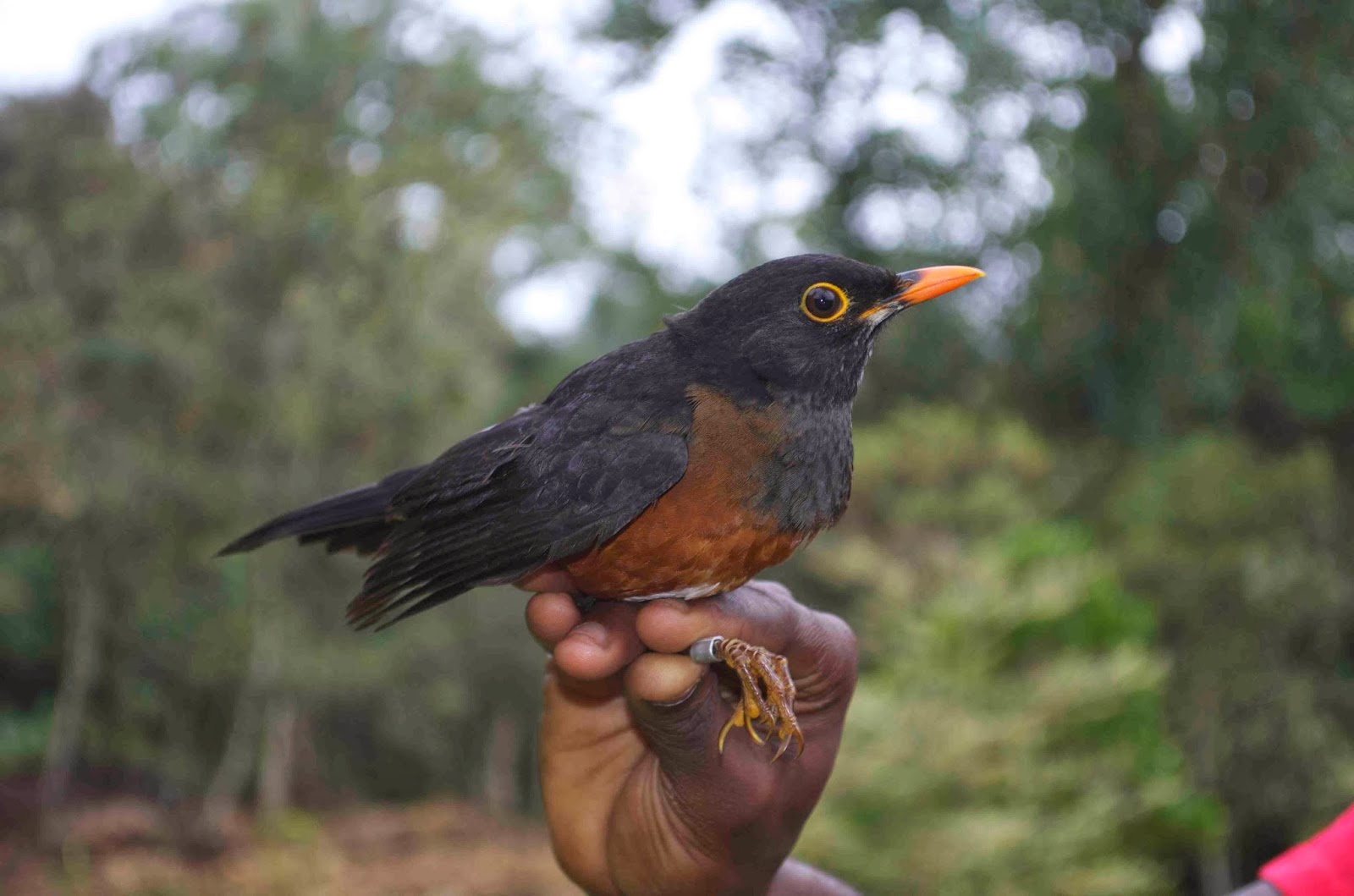Jim Goetz, a dedicated team of Haitian conservationists and I just completed 3 days of banding and point counts at our Berak study site, one of the largest broadleaf forest remnants in Haiti’s La Visite National Park. As part of a grant-funded project to provide Payments for Ecosystem Services incentives to local tenants in and around Berak, we are documenting the migrant and resident bird population there, following up studies we conducted in 2005. By simultaneously preventing further forest loss and promoting regeneration, we hope to preserve – and increase over time – this vulnerable “island” of critical habitat. A precious reservoir of biodiversity is at stake. I was encouraged to note that Jim’s contract with the local tenant who farms Berak appears so far to be viable – no additional cutting had occurred within the forest core since last winter, and some impacted areas are rapidly regenerating.
We ran 18 mist nets and captured nearly 100 individual birds (95 to be exact) at Berak – 13 carried bands from our field visit a year ago, while one tenacious Narrow-billed Todystill sported its band from 2005! Again, as last February, we were surprised to detect no Bicknell’s Thrushes (BITH) in this forest patch, despite having mist-netted two birds at our smaller and more highly impacted La Visite site earlier in the week. Berak, which supported at least 7 BITH in 2005 (we banded 6), does not appear to have changed drastically since then, so the species’ complete absence during two consecutive years is puzzling.
Banding highlights at Berak included 2 La Selle Thrushes, a striking but endangered endemic Hispaniolan cousin to our American Robin, and a male Sharp-shinned Hawk (the Hispaniolan subspecies is endemic), which we had captured last year. The dawn and dusk chorus of Rufous-throated Solitaires provided a haunting, magical backdrop to our visit.
Although conservation in La Visite (and elsewhere in Haiti) remains fragile, positive signs provide hope that the tide can be turned. The battle is uphill, to be sure, but the cause is worth every effort we can muster.



It’s extraordinary what one visionary, dedicated young man can do in a country
that once seemed hopeless. I will never forget standing on a hillside in Costa
Rica and looking down at adjoining Nicaraguai, which looked to be a desert in comparison with the tropical lushness of Costa Rica. Not that all of Nicaragua is deforested and over-grazed, far from it, but that particular area was. But I have
read that Haiti’s condition is far worse.